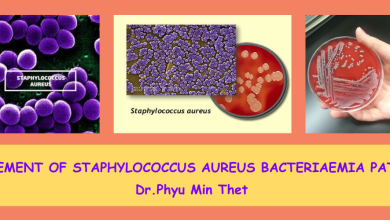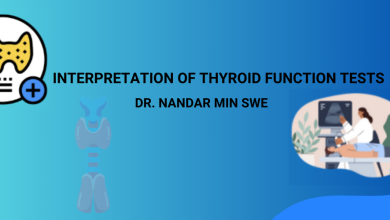1.Introduction
Penile paraffinoma, an old term for sclerosing lipogranuloma of male genitalia, is an uncommon entity produced by penile paraffin injections for the purpose of penile enlargement. Generally, penile subcutaneous and glandular paraffin injections for penile augmentation are performed by a nonmedical person, under unacceptable conditions. It usually occurs months to years after the injections. Unfortunately the injections are generally repeated a number of times in order to reach the desired enlargement and shape, which in turn causes the early complications such as infection, allergic reactions, paraphimosis (circumcised or uncircumcised), severe pain, or tenderness and inflammatory reactions.
A wide variety of oils, including paraffin, mineral, silicone, vaseline, motor transmission fluid, cod liver oil, and autologous fat, as well as nandrolonedecanoate and mercury, have been injected into the penis with the intent of augmentation.
2. Pathology
Paraffinomas consist of a granulomatous foreign-body reaction inducing a sclerosing lipogranuloma because the human body lacks the enzymes to metabolize interstitial exogenous oils, and a foreign-body reaction occurs as a reaction to paraffin substance injection, and fibrosis leads to paraffinoma formation.
The foreign body reaction manifests in the form of inflammation and induration, edema, scarring, necrosis, deformity, ulceration, painful erections and eventually, the inability to achieve sexual activities.
Histopathological features include the substitution of normal subcutaneous tissue by cystic spaces of oil. These spaces appear as empty cysts when stained by hematoxylin and eosin. Dense fibrous tissue and granulomatous chronic inflammatory cells, including foreign-body giant cells, encircle these lakes of oil.
Microscopically the normal structure of the subcutaneous fat layer was completely disrupted. The stromal septa had undergone hyaline necrosis which had permitted fat droplets to coalesce into large globules of various sizes separated by fibrous connective tissue. Many cyst like spaces lined by endothelium or more frequently by syncytial giant cell of foreign type were encountered through the involved tissue. Many of these cyst-like spaces were surrounded by dense and deeply eosinophilic collagen tissue. Numerous macrophages containing phagocytosed fat and moderately heavy round cells infiltration were seen around the blood vessels.
3. Clinical manifestation
The mean age of affected patients is around 28 years (18 – 65 Yr) and symptoms typically develop a year after implantation of the material. Clinical manifestations usually consist of deformity, impotence, erythema, and edema leading to paraphimosis and pain. The main complications are infection, ulceration, necrosis, and the formation of fistulas. There have also been reports of migration of the material, with invasion of the corpora cavernosa and regional lymphadenitis.
4. Differential Diagnosis
– Liposarcoma
– Sclerosing lipogranuloma
– Foreign body reaction
– Infectious diseases
– Squamous cell carcinoma
5.Investigation
Ultrasonography (USG)
The extent of dermal inflammation, presence or absence of collection and the depth of ulcers can also be evaluated with USG. More importantly, USG allow radiologists to determine if the plane between the indurated inflammatory tissue and the Buck’s fascia is preserved which allows for complete surgical excision of affected tissue . It is important for the surgeons to know if there is a clear place between the foreign body material and the Buck’s fascia because for definitive treatment, complete excision of the foreign body is not possible if the Buck’s fascia is involved and scarred. Proximal extension of granulation tissue, scrotal involvement and loco regional lymph node involvement can also be evaluated.
Magnetic Resonance Imaging (MRI)
MRI is helpful to evaluate the extension of foreign body to ant: abdomen.
6.Treatment
There are several treatment options for penile paraffinomas ranging from conservative measures, including intralesional steroid injections and hot water baths, to more extensive radical operations
Definitive treatment of penile paraffinomas includes the aggressive wide excision of skin and subcutaneous tissue infiltrated by the foreign material with appropriate phalloplasty. These operations are complex plastic and reconstructive procedures, time consuming and in some cases, difficult to fully treat the first time. A follow-up operation for two-stage repair or because of the development of a complication may be required. Split-thickness skin graft phalloplasty with or without mesh has resulted in a cosmetically acceptable and sexually functional repair. Split-thickness skin graft in conjunction with an artificial dermal regeneration plate has also resulted in a robust reconstruction with good aesthetic results. Penile coverage by means of inguinal flaps, free flaps, or native penile skin can result in a successful erectile and functional reconstruction. There commonly exists a plane between the indurated inflammatory tissue and the corporal structures, which often allows for completed excision of affected tissue. While excision of the subcutaneous tissue alone preserves the superficial skin layers, it inevitably leads to necrosis of the epidermis. Patients in whom complete removal of the foreign material may not be possible or those with residual foreign body granuloma may benefit from reconstruction phalloplasty with bilateral scrotal flaps. A two-stage procedure may also be employed where the denuded penis is buried in the scrotum in the first stage and penile reconstruction is performed three months later. Treatment with intralesional corticosteroids have also resulted in acceptable outcomes in a few select cases. Failure to fully excise the foreign body may result in recurrence mimicking progressive carcinoma.
Scrotum
The blood supplies of the scrotal skin are mainly from three sources. The anterior part is supplied by the deep external pudendal artery, the posterior part by branches from the internal pudendal artery, and the inner side by branches from the testicular and cremasteric arteries. The anterior part is innervated by the ilioinguinal nerve while the posterior part is innervated
by branches from the peroneal nerve and posterior femoral cutaneous nerve.
Algorithm for operative management of penile parafinoma
Operative procedures
- Local excision
- Circumcision + excision of fibrotic tissue
- Two-staged penoplasty
- Skin graft – Full thickness / SSG
- Bilateral scrotal skin flaps
- Dorsal T + ventral V-Y plasty
- Scrotal tunnel + ventral V-Y plasty (MSIID – Modified Scrotal Implantation with Immediate Detachment)
7. Conclusion
Patients should be informed about the disfiguring effects of oil injections into the genitals. It does not result in improved satisfaction of the penis. It results in significant side effects which often leave patients wanting the injection material removed.
New modalities being used or investigated by medical professionals for penile augmentation are:
- injections of autologous fat or hyaluronic acid gel
- grafts of dermal-fat strips, and
- allograft dermal matrix grafts
- release of suspensory ligaments


References</h3/>
- Azhar Amir Hamzah et al . Penile Siliconoma: Complication of Unregulated Penile Augmentation with Foreign Material . International Journal of Surgical Research 2015, 4(1): 1-3 DOI: 10.5923/j.surgery.20150401.01
- Joe Francis et al. Ultrasound and MRI features of penile augmentation by “Jamaica Oil”
injection. A case series. Med Ultrason 2014, Vol. 16, no. 4, 372-376 DOI: 10.11152/mu.201.3.2066.164.apchoo - Julian Oñate Celdran et al. Penile paraffinoma after subcutaneous injection of paraffin. Treatment with a two step cutaneous plasty of the penile shaft with scrotal skin. Case reports . Arch. Esp. Urol. 2012; 65 (5): 575-578
- Pongsak Sancharoen, M.D., F.R.C.S.T. Modified Scrotal Implantation with Immediate Detachment: A New Designed Flap for Penile Paraffinoma. ปีที่ ๒๖ ฉบับที่ ๒ พฤษภาคม-สิงหาคม ๒๕๕๒. Volume 26 No.2 May-August 2009
- Philip M.Zickerman, MD et al. Penile oleogranuloma among Wisconsin Hmong. Wisconsin Medical Journal 2007. Volume 106, No. 5.
- István Sejben, MD et al. Petroleum jelly-induced penile paraffinoma with inguinal
lymphadenitis mimicking incarcerated inguinal hernia. CUAJ • August 2012 • Volume 6, Issue 4 © 2012 Canadian Urological Association - Gómez-Armayones S, Penín R, Marcoval J. Parafinoma de pene. Actas Dermosifiliogr. 2014;105:957—959
- Sirachai Jindarak MD et al. Bilateral Scrotal Flaps: A Skin Restoration for Penile Paraffinoma J Med Assoc Thai 2005; 88(Suppl 4): S70-3
- Tack Lee et al. Paraffinoma of the penis. Yonsei Medical Journal. Vol 35, No. 3, 1994.
- Shin YS et al. New reconstructive surgery for penile paraffinoma to prevent necrosis of ventral penile skin. Urology 2013 feb.81(2) 437 – 41. doi: 10.1016/j. urology, 2012.10.017.






